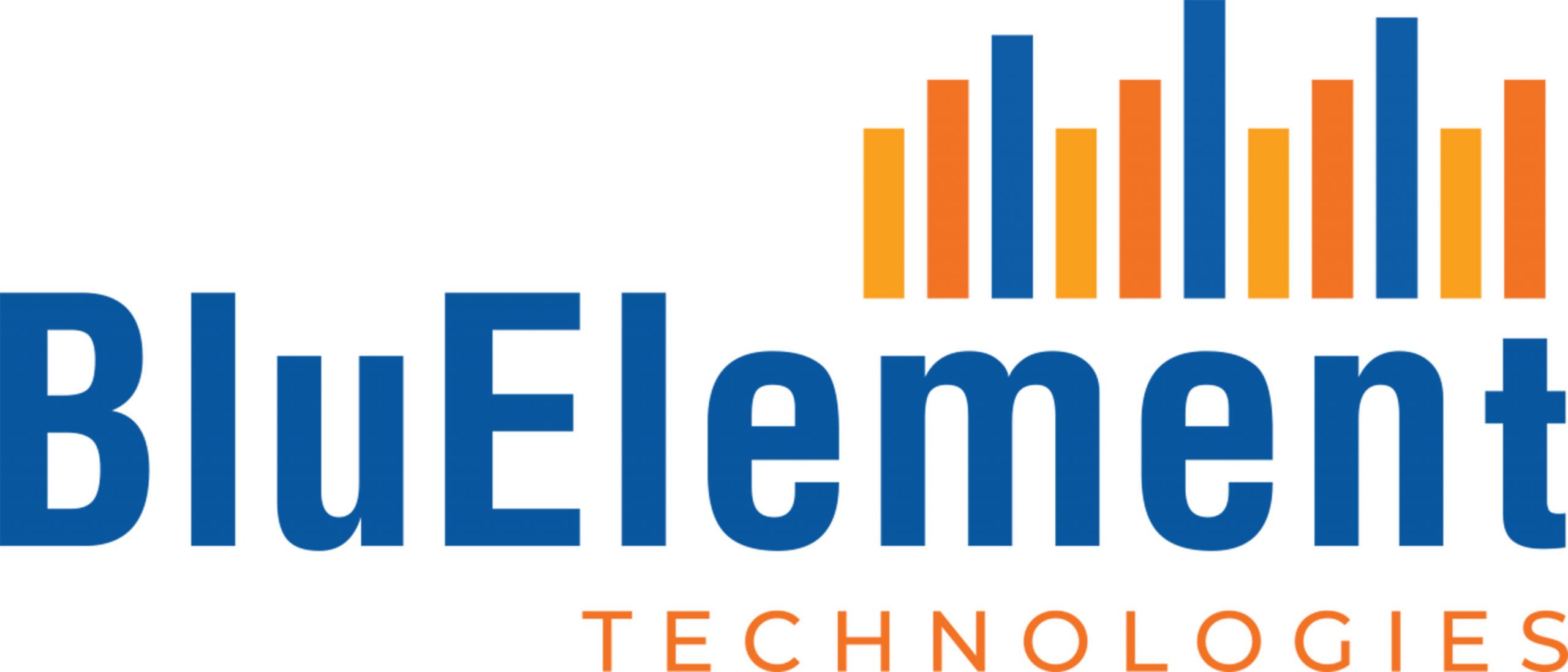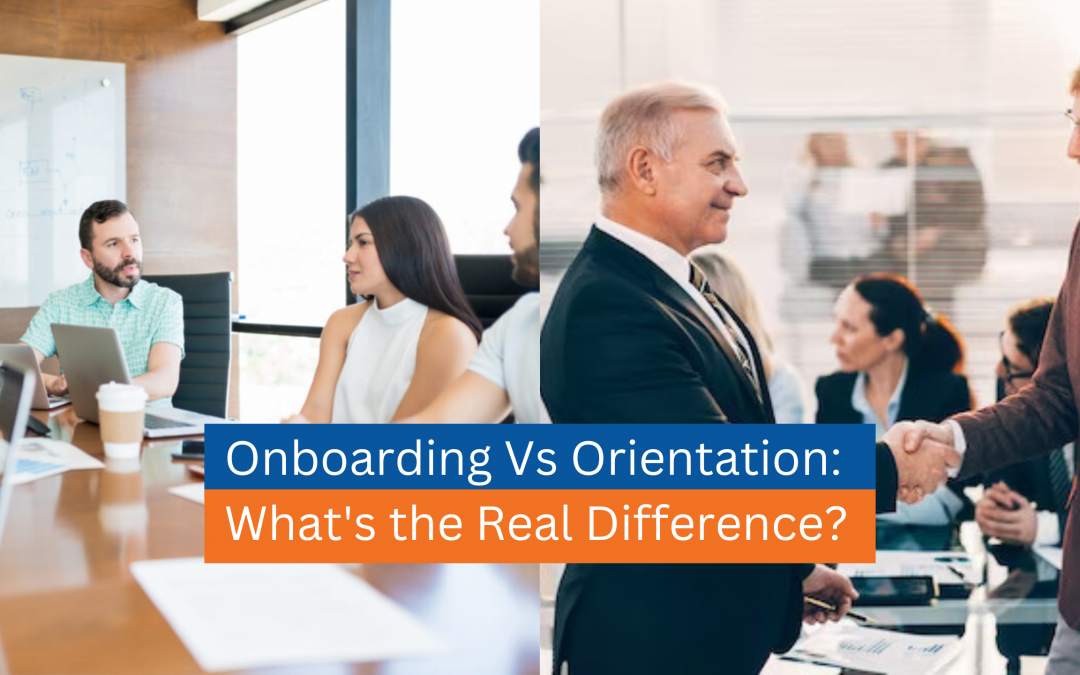Reid Hoffman, co-founder and executive chairman of LinkedIn once said that “the importance of onboarding is significantly increased these days since the average turnover at work is less than four years and lifetime employment strategies are out of date”. Onboarding is important, but so is orientation. But most people get confused about these two. With this article, my goal is to help you understand the difference between onboarding vs orientation and why both are crucial for the success of new hires.
What is onboarding?
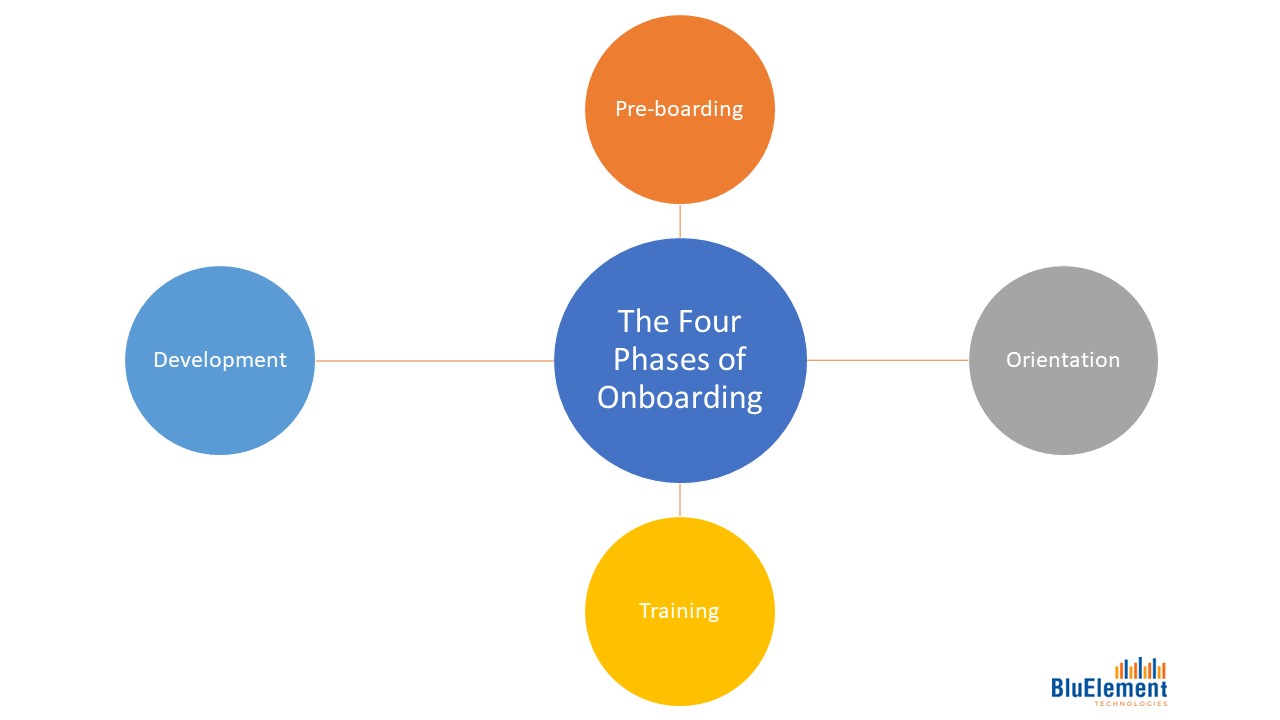
The process of integrating new hires into your organisation and assisting them become an active member of your team is known as onboarding. It does more than merely give a summary of the business’s operations and policies.
In order to ensure that new personnel are successful in their positions, onboarding often lasts for several months and include ongoing training and support. The purpose of onboarding is to give new hires a fulfilling and enjoyable experience while also preparing them for long-term success in your company.
Also read: Onboarding Checklist for New Employees: Remote & In-person
What is orientation?
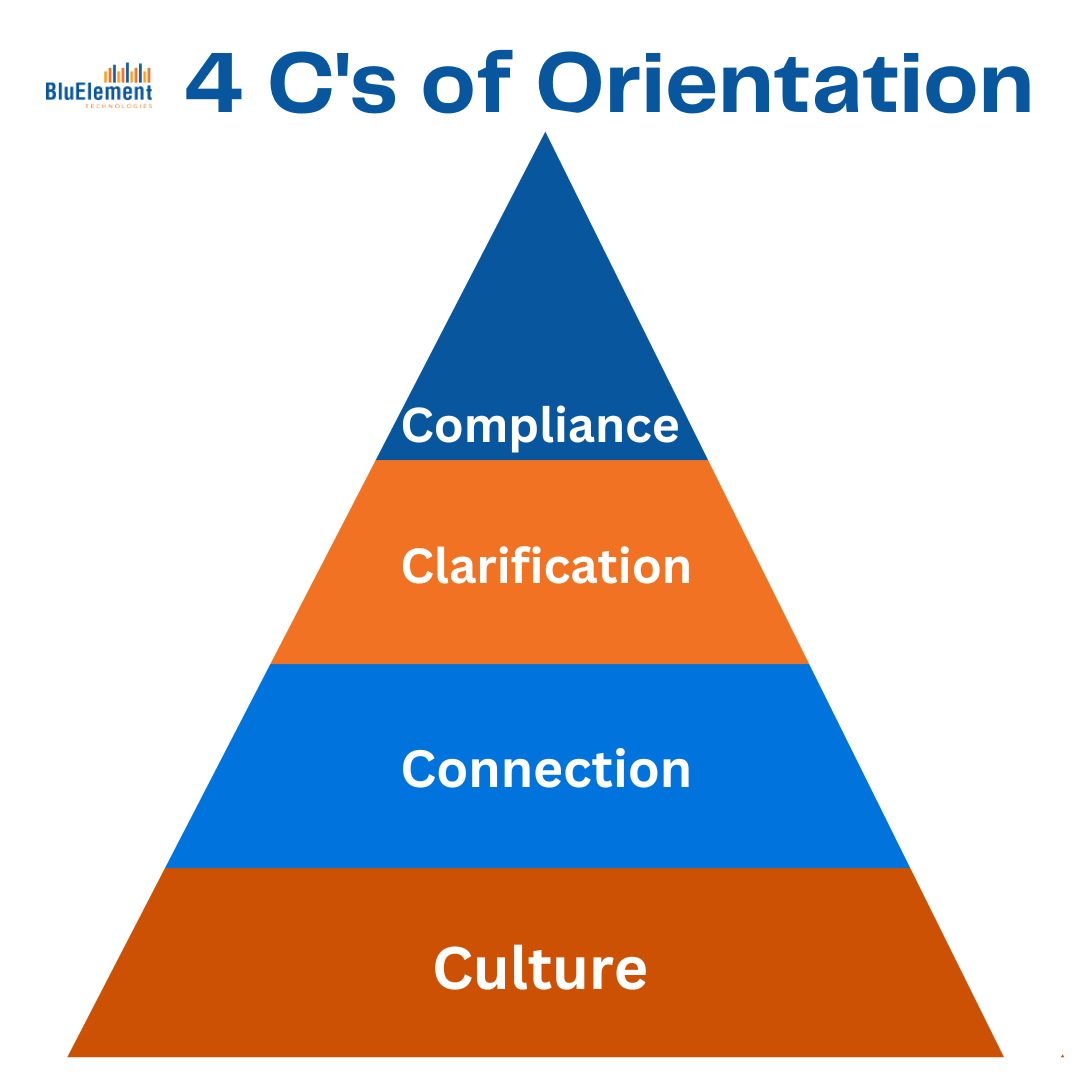
The first day a new employee begins work is often when orientation takes place. It gives a general overview of the business’s culture, rules, and practices. The purpose of orientation is to make new hires feel welcomed, comfortable, and knowledgeable about their new workplace and role. To ensure that new hires are prepared for success, more support and training should come after the initial phase of the onboarding process.
The importance of both onboarding and orientation
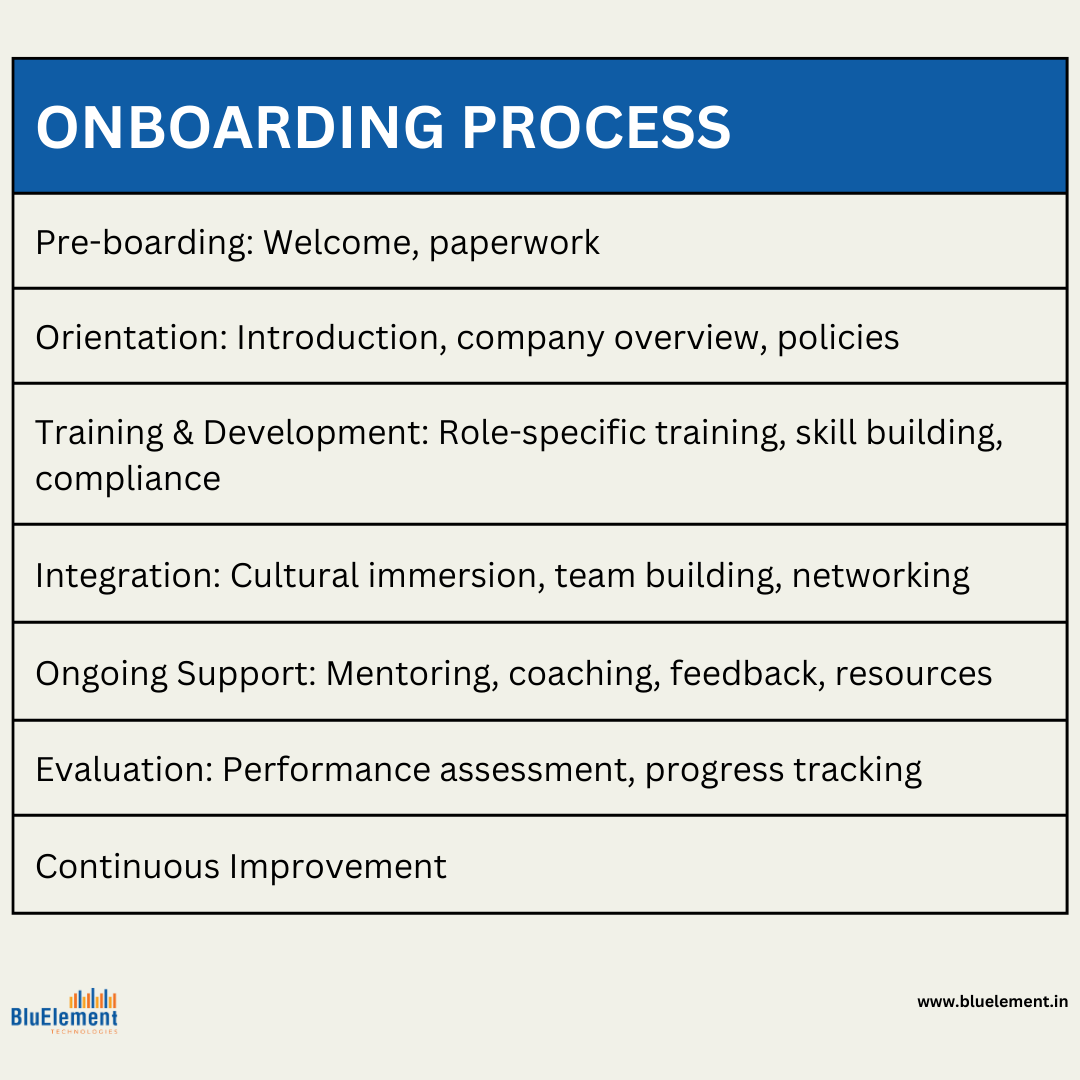
Onboarding goes above and beyond orientation to make sure that new recruits are completely integrated into the organisation and have the tools and resources they need to thrive in their roles. Orientation is crucial for giving new hires a general overview of the firm. In order to make new hires feel comfortable and effective in their new roles, onboarding includes continuing training, mentoring, and support. Companies may develop a comprehensive program that prepares new hires for success and enables them to feel appreciated and supported from Day One by integrating orientation and onboarding.
Key differences between onboarding vs orientation
Even though onboarding and orientation are both two separate processes, they are often used interchangeably. During the first few days or the initial week of a new hire, information about the business like the mission, values, and policies are discussed. This is orientation. On the other hand, onboarding is a much more long term process that can take several months to complete. It will include ongoing training, mentoring, and assistance to aid new hires in successfully integrating into the company and helping them do their jobs satisfactorily. Onboarding is an important step to foster a welcoming and effective work environment for new hires, while orientation is necessary.
In this table below, you can find the key differences between onboarding vs orientation in bullets:
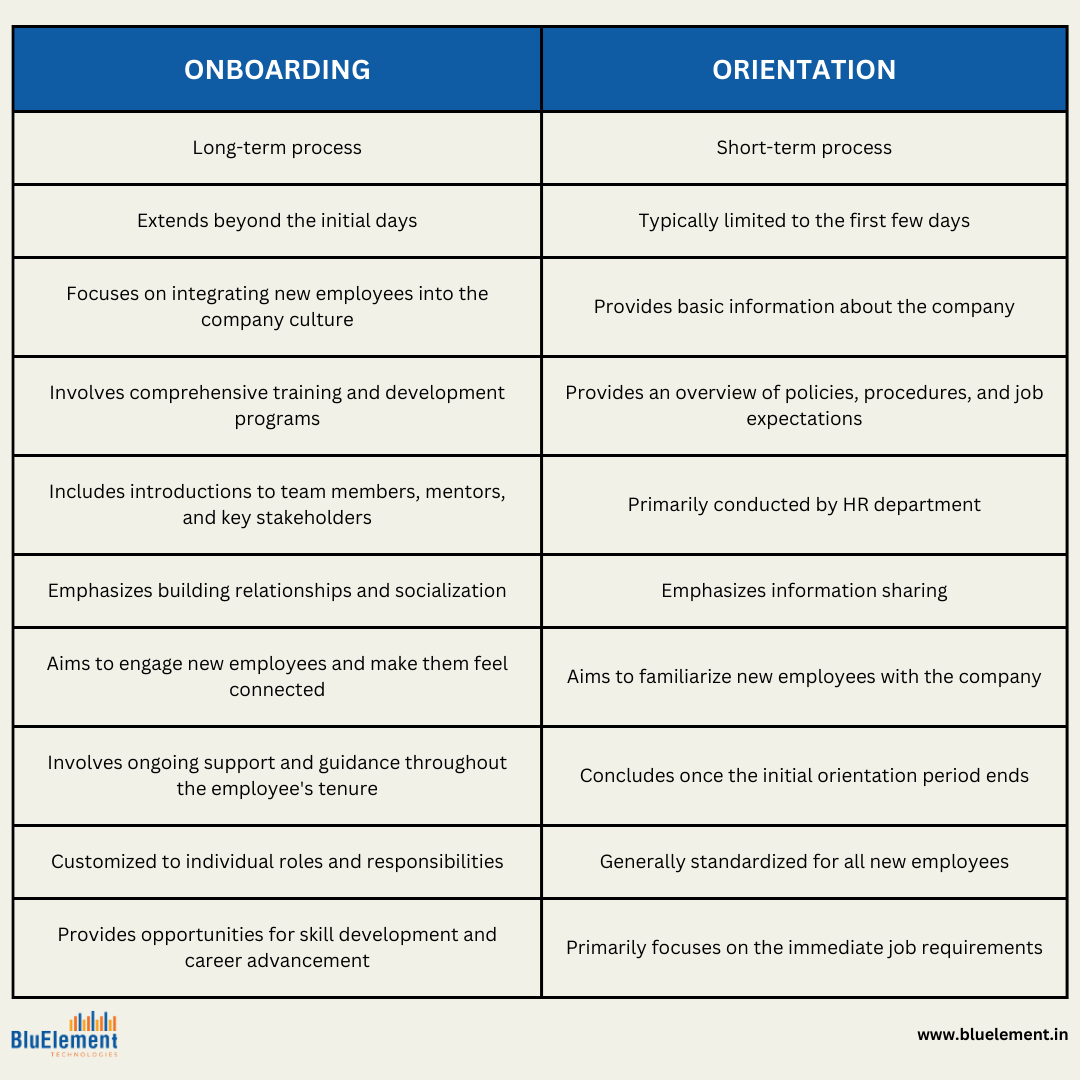
Best practices for successful onboarding and orientation programs

In order to guarantee the success of your orientation and onboarding programmes, it is important that you stick to the industry best practices. First, ensure that new hires have access to all the information they require, including business policies, procedures, and expectations, in order for them to succeed. Second, continue to teach and support new personnel as they acquire the abilities required for success in their positions. Last but not least, foster a friendly and inclusive workplace where new workers are encouraged to share ideas, ask questions, and feel like a valued member of the team. You can design an effective onboarding and orientation programme that prepares your new hires for success by implementing these best practices.
In short:
Provide access to essential information:
- Share business policies, procedures and expectations with new hires.
- Make sure that you provide all information for the new hire to execute their tasks in a timely and efficient manner.
Provide continuous training and support:
- Help new hires acquire the skills and knowledge needed for their role.
- Offer ongoing guidance and mentorship throughout the onboarding process.
Foster an inclusive, collaborative, and friendly work environment:
- Create a welcoming environment where new hires feel valued and heard.
- Encourage them to share ideas and ask questions.
- Cultivate a sense of belonging and teamwork within the organisation.
Design an effective onboarding and orientation program:
- Incorporate the above mentioned best practices while designing your onboarding and orientation process.
- Prepare new hires for success by following these guidelines.
Conclusion
It is important to understand the difference between onboarding vs orientation for the success of new hires in the organisation. While orientation is a process that provides a general overview of the company’s culture and practices, onboarding goes beyond that to fully integrate new hires into the company and equip them with the necessary tools and support needed for long term success. If you combine both, you will be able to create a comprehensive program that ensures new hires feel welcomed, supported, and are prepared to perform from day one. Implement the best practices mentioned in this article like providing access to essential information, offering continuous training and support, fostering an inclusive work environment, and designing an effective program, to set new hires for success in their new roles and promote a positive and inclusive culture.
Follow us on our Facebook, Instagram, and LinkedIn pages to stay updated with the latest articles, videos, announcements, and more.
